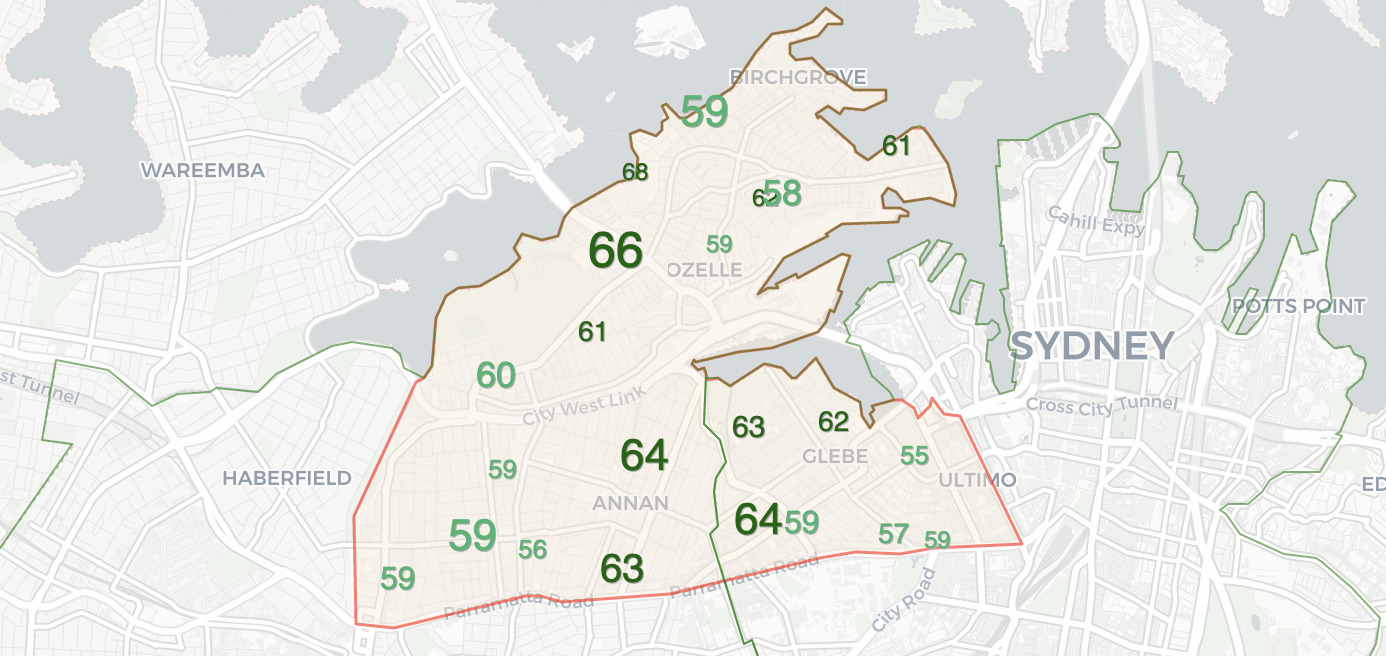Earlier today it was announced that Greens MP Jamie Parker is retiring from his seat of Balmain at next March’s state election.
This is an unusual event because the Greens have never had an MP holding a single-member electorate who has retired of their own accord, and it opens up questions about what might happen in his seat.
In the history of the Greens, 15 MPs have won a single-member electorate in one of the mainland lower houses. 12 of these MPs were elected at general elections, with three at by-elections. This last detail is important – none of the three elected at by-elections managed to win re-election.
Michael Organ won the federal seat of Cunningham in 2002 and Lidia Thorpe won the Victorian state seat of Northcote in 2017, and neither was re-elected at the next general election. Adele Carles won the WA state seat of Fremantle in 2009. She ended up leaving the Greens in scandal and losing as an independent.
In contrast, the 12 MPs elected at a general election are still there. No defeats and no retirements.
These seats were:
- Melbourne (federal) in 2010
- Balmain in 2011
- Melbourne (state) and Prahran in 2014
- Newtown and Ballina in 2015
- Maiwar in 2017
- Brunswick in 2018
- South Brisbane in 2020
- Ryan, Brisbane and Griffith in 2022
Generally these MPs have strengthened their margin after first winning their seat, although five of them are yet to face re-election.
It’s not entirely clear why these MPs tend to strengthen their position: how much is the particular MP’s personal vote, and how much is voters changing their attitude to the Greens after having the experience of a local MP. I suspect it’s a bit of both.
The history of independent MPs suggests that an individual independent MP will also strengthen their margin after winning, but those strong MPs can still have a lot of trouble handing over their seat to a successor. But the Greens are a party, not independents.
This topic got me interested in how Greens MPs tend to leave parliament. According to this handy Wikipedia list, there have been 105 unique Greens MP terms of service. I’m counting people who had non-consecutive parliamentary terms (or terms in different parliaments) as separate cases – at least seven senators had previous service in a state parliament, and a number of MPs have returned to parliament after losing their seat or previously stepping down.
88 out of 105 held a multi-member seat. 36 of these MPs currently hold their seat. This leaves 69 others who have departed parliament.
Of these 69:
- 33 have been defeated for re-election. This includes 2 Greens elected in by-elections and one (Ronan Lee) who defected from Labor and lost his single-member seat the next election.
- 1 has died in office (John Kaye)
- 4 left the party. This includes Kris Hanna, who had defected from the ALP and then became an independent, retaining his single-member seat for one more term as an independent.
- 23 retired mid-term. This includes every voluntary retirement in the Senate, Tasmanian lower house, Victorian upper house or South Australian upper house.
- 7 retired at an election. This includes every voluntary departure from the ACT assembly. It also includes Greens MP Dawn Walker, who was demoted to the unwinnable fourth seat then promoted to the hard-to-win third seat, so you could argue she did not leave voluntarily.
- One other case that’s hard to define – Giz Watson gave up her more winnable North Metropolitan seat in the Western Australian upper house for a less winnable seat and then lost. So you could argue this was a defeat or a retirement.
So retirement at election is quite unusual for Greens MPs, which mainly reflects that most of them have held multi-member seats which can be handed over to a fellow party member without a by-election. In some parliaments, it’s the only way transitions take place. But retirements at election time will become more common as the first generation of single-member seat holders retire.
Now, back to Balmain. I have a guide to Balmain as part of my NSW election guide. It is currently behind a paywall but you can access it by signing up for $5 per month via Patreon.
This map is a key part of that guide. You can toggle between booth results for the two-candidate-preferred (Greens vs Labor), two-party-preferred (Labor vs Liberal) and primary votes for the three top parties.
You can see that the Greens vote is highest in a central spine of the seat running from Annandale to Rozelle. The Labor vote is highest in the Ultimo area, but the ALP did not win any election day booths. The Greens also won all of the special vote categories.
The Labor candidate is a first-term Inner West councillor representing the Leichhardt ward, a majority of which is in the electorate. I have heard reports that the Greens candidate is another first-term councillor representing the Balmain ward, which is entirely within the electorate. Neither has a remarkably high profile, so it’s not easy to say what might happen. I think it’s likely that the Greens will win, but the strengthening Labor position at this election combined with Parker’s departure does open a window for the ALP in Balmain.
At this election it also appears that there aren’t that many serious open contests between Labor and the Greens. Newtown seems locked in behind the Greens, while the Greens are the clear leading progressive party in Ballina. The Greens appear to be putting in an effort in Lismore, where Labor defeated the Nationals in 2019. It wouldn’t take much of a swing from Labor to Greens to put the Greens in front, but the incumbent Labor MP should help their position. So this retirement may result in Balmain being the main front in Labor-Greens competition in the March state election.



